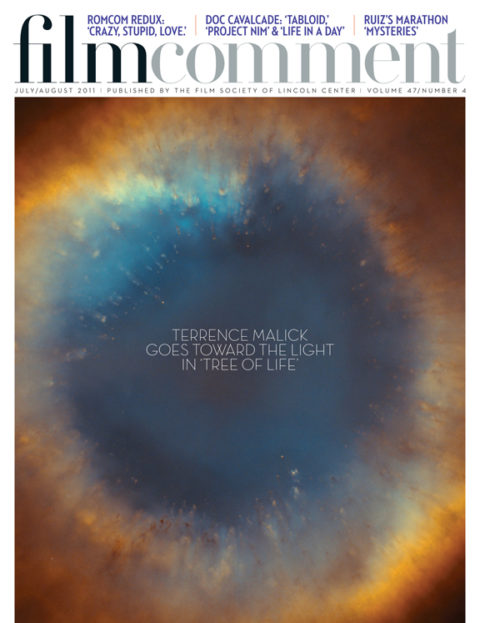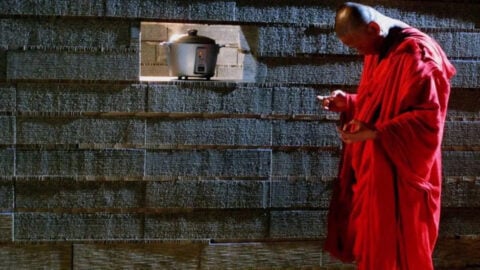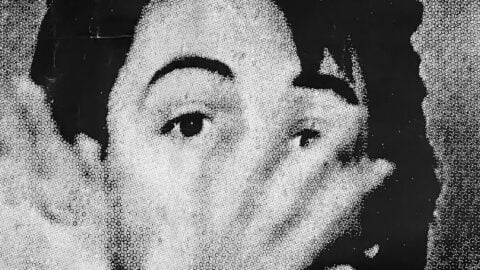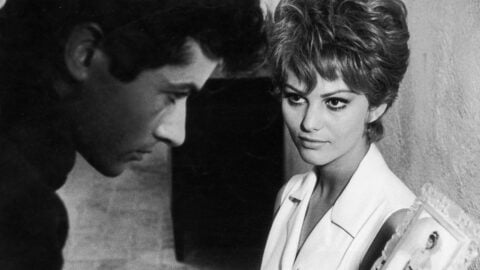
Walter Pater’s famous claim that “all art constantly aspires towards the condition of music” still reverberates within certain fusty circles, like some lost entry out of Flaubert’s Dictionary of Received Ideas. Middlebrow absurdity for sure, but nonetheless a useful argument-starter for visitors to New York’s Park Avenue Armory this spring, where electronic composer and multimedia wizard Ryoji Ikeda commandeered the darkened, cavernous Drill Hall’s 55,000-square-foot space with the transfinite, his most accomplished work to date. I say “commandeered” as there’s a military precision to Ikeda’s tightly synched audio-visual elements.
Though starting out as a composer, Ikeda’s curiosity has long extended beyond music, traversing disciplinary boundaries in his early collaborations with the Kyoto-based performance troupe Dumb Type and his ongoing work with Carsten Nicolai. In recent years he has created a series of increasingly bold multimedia concerts and installations that explore the possibilities of binary code functioning as a bridge between sound and image.
In its quest for total cinematic immersion—beyond that of VistaVision and today’s 3-D—the transfinite shares something of the spirit of Stan Vanderbeek’s Movie-drome and other pioneering examples of expanded cinema, here carried out in digital form. Ikeda’s constellation of three preexisting pieces, reorchestrated as a single work, centered around a 40-foot-tall, 54-foot-wide double-sided screen bisecting the Drill Hall. The first section seen upon entry, test pattern, consisted of horizontal bands projected onto both the screen and the floor in front of it. The image as such was divided vertically down the center, with each half moving in opposite directions.
Once visitors removed their shoes, they could step onto that clean white surface as a separate projection washed over them from above. Don’t-touch-the-art inhibitions disappeared, and people spread out and lay prone as though viewing a meteor shower. For some it seemed the next best thing to a trip to Sedona, as they positioned themselves along the centerline in the work’s most turbulent zones. From certain perspectives, the sweeping striations of light fused the two planes of screen and floor as one moving surface; from other angles, the juncture evoked the moment when a ball bounces and changes its trajectory.
On the reverse side were the transfinite’s two other components, data.tron and data.scan. The former’s rapidly changing projection of vertical data columns (graphs, numbers, words) scrolled in contrary speeds and directions, giving the effect of a slot machine before its reels come to rest. The latter was a series of small-screen echoes of data.tron, with nine evenly spaced monitors facing up like old Pac-Man tabletop game consoles, aligned perpendicular to the screen and displaying synchronized variants of the larger projected image.
Ikeda’s music is replete with contradictions: uncompromising in its sonic austerity, but at the same time amazingly rich; machine-like in its rhythms, yet beckoning us to invent new dances. Often lumped together with other artist-cultivators of the glitch aesthetic who first found prominence in the mid-Nineties, Ikeda stood apart from the Cagean indeterminacies of peers such as Farmers Manual and Pita, displaying instead a greater affinity with Conlon Nancarrow and his proto-programmed studies for the player piano. Like Nancarrow, Ikeda purges all traces of human touch, aspiring to crystalline perfection. The outcome, however, holds the paradox that, as critic Kodwo Eshun has written, “machines don’t distance you from your emotions, in fact quite the opposite. Sound machines make you feel more intensely, along a broader band of emotional spectra than ever before…” However absolute Eshun’s statement may seem, it’s nevertheless a useful corrective to a certain sort of lazy humanist thinking.
One might assume the aforementioned “military precision” would violate that long-held cinematic taboo against “Mickey Mousing.” Originally an animator’s term coined to describe a superfluous lock-step relationship between music and image, its disparaging overtones belie a complex tangle of aesthetic and technological concerns that deserve an essay all their own. The short version is that filmmakers such as Eisenstein, Clair, and Grierson viewed its early practice as a sad failure of imagination, against which they argued for an asynchronous approach. Following the achievements of silent cinema at the time of sound’s arrival, they regarded this audio/visual redundancy as a giant step backward, with speech and music relegating the primacy of the image to a diminished, secondary role.
Today the issue reappears as a perennial problem with live electronic music (and as a sub-factor in the unaccountable popularity of air guitar competitions): the paltry spectacle of a performer obscured by synthesizer or laptop-pointing, clicking, sliding sliders and twisting knobs, fully engaged with instruments and oblivious to their audience. One common solution—especially among laptoppers running Max/MSP or Processing software—has been to design patches that generate some sort of visual corollary that’s driven along in real time with the music. While ingenious on a technical level, the results rarely transcend the innocuous, resembling nothing so much as a lousy screensaver.
The radical abstraction of Ikeda’s imagery, along with the music’s non-idiomatic shapes and dot-matrix printer polyrhythms, shift the attention to purely visceral sensations; we’re inclined to perceive this sound/image synchronicity organically as we would a moving object and the noise it produces. His imagery—beyond sharing the music’s icy perfection—seems bent on provoking questions: where do these streams of data originate? Do they visualize some other aspect of what we’re seeing (or hearing), or perhaps something external to the work? Is it part of the work’s metadata, or only intended to appear that way?
And then there’s the question of speed; we’re taken well beyond that threshold where reading becomes looking. Numbers and abbreviations fly by fast, like a transcript for some cyborg auctioneer; it takes real effort to comprehend these encrypted text/graphic hybrids, even when the image briefly pauses.
Moving among the nine monitors of data.scan, you could find partial answers. Those versed in astronomical star-naming protocol may recognize terms like “Epsilon Indi” and “Wolf-294,” hints suggesting something beyond a closed system of self-reference. The sky and stars have long been of interest for experimental filmmakers such as Joseph Cornell, Stan Brakhage, and Jeanne Liotta. Let’s not forget, too, that expanded cinema trailblazer Jordan Belson went so far as to screen site-specific work—long before Laser Floyd—within a planetarium itself.
Less apparent within the rapid graphic motion of data.tron are terms like Lys, Val, and Arg, abbreviations for various amino acids; it may seem that Ikeda is drawing a simple and rather reductive analogy between binary code and the Human Genome Project—until we consider that the sheer amount of data outstrips any real possibility of its comprehension.
By deriving material from astronomy and genetic mapping, the transfinite acts as a kind of conceptual zoom lens, fulfilling cinema’s dreamed-of union of inner and outer space, an aspiration shared by contemporaries Luis Recoder and Sandra Gibson, and Bruce McClure. Celebrating extremities of scale and the instruments that act as sensory extensions to allow their perception and measurement, the work also pays homage to a not-so-obvious ancestor: Charles and Ray Eames’s 1977 short Powers of Ten.
© 2011 by Jim Supanick








